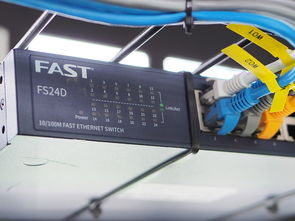In the ever-evolving landscape of cryptocurrency, the quest for sustainability in Bitcoin mining has become more crucial than ever. As the industry grapples with energy consumption concerns, hosted mining ventures offer a promising path to more eco-friendly operations. These platforms, which allow investors to lease mining hardware hosted in specialized facilities, are increasingly turning toward green energy solutions to power their operations. The fusion of cutting-edge mining rigs with renewable energy sources creates a synergy that not only slashes carbon footprints but also enhances profitability in volatile markets.
The essence of hosted Bitcoin mining lies in its ability to provide miners, from individual enthusiasts to large-scale investors, with access to high-efficiency machines without the logistical headaches of managing the hardware. Traditional mining setups demand considerable investment in infrastructure, cooling systems, and maintenance, often compelling operators to select locations with cheap, yet environmentally taxing energy sources, such as coal or natural gas. Hosted mining farms shift this paradigm by situating machines strategically in areas abundant with renewable energy, including hydroelectric, wind, and solar power, thereby aligning economic incentive with ecological responsibility.

Take, for instance, the rise of mining farms nestled beside colossal hydroelectric plants. These facilities harness vast amounts of clean energy, providing a consistent power supply essential for uninterrupted mining operations. Not only does this lower operational costs due to the often subsidized clean energy, but it also addresses the widespread criticism of Bitcoin’s energy-intensive reputation. By leasing mining rigs in these green-powered enclaves, hosts and miners alike contribute to a narrative where cryptocurrency mining becomes a catalyst for renewable energy adoption rather than a drain on the planet’s resources.
Beyond Bitcoin, other stalwart cryptocurrencies like Ethereum are also witnessing shifts in their mining ecosystems, with moves toward proof-of-stake mechanisms lessening the need for energy-heavy computations. However, for those still invested in proof-of-work coins, especially Bitcoin and Dogecoin, the demand for efficient, high-performance mining rigs remains insatiable. Manufacturers of mining equipment are innovating relentlessly—integrating superior cooling technologies, optimizing chip designs, and enhancing hash rates—to deliver machines that squeeze more value per watt consumed.

Yet, possessing a top-tier mining rig is just one piece of the puzzle. Hosting providers who operate multiple mining machines can capitalize on economies of scale by deploying them in data centers equipped with advanced heat recycling systems and energy management software that dynamically adjusts power consumption based on grid loads and energy prices. Some ventures even participate in demand response programs, temporarily reducing power draw during peak demand moments, further easing environmental impact.
This intricate dance between hardware performance and energy sourcing underscores the multifaceted nature of eco-friendly hosted mining. Integrating blockchain technology with the circular economy concept, mining farms can, for example, channel the excess heat generated by mining rigs to warm nearby greenhouses or residential complexes, turning waste into a resource. Such innovative practices illustrate how the mining sector is expanding its horizon from mere digital currency production to contributing tangible benefits to the communities hosting them.
Exchange platforms play a complementary role in this ecosystem by providing liquidity and enabling miners to convert their mined cryptocurrencies into fiat or other digital assets efficiently. With growing regulatory scrutiny on environmental standards, exchanges increasingly vet their mining partners for sustainability compliance, pushing hosted mining ventures to adopt greener practices not just out of ethical consideration but as a market differentiator. Investors now seek transparency reports on energy consumption and carbon emissions, infusing the entire value chain with eco-conscious rigor.
Furthermore, the surge in Dogecoin’s popularity has led to an unexpected twist in the mining arena. Originally conceived as a lighter, more accessible alternative, it shares much of its codebase with Bitcoin, demanding similar proof-of-work validation. Hosted mining services that bundle Dogecoin and Bitcoin mining create diversified portfolios for investors, tapping into different market dynamics while still prioritizing energy efficiency and responsible hosting. These hybrid strategies exemplify the diversity and unpredictability imbued in modern crypto mining ventures.
Institutions and independent miners considering hosted Bitcoin mining must weigh several criteria: the source of electricity, the efficiency and lifespan of mining equipment, the transparency of hosting providers, and the environmental policies embedded within various jurisdictions. The best eco-friendly options are not just about slashing carbon emission figures; they reflect a holistic commitment to sustainable innovation and resilience—a testament to how the crypto industry can reconcile its explosive growth with stewardship of the planet.
Ultimately, as Bitcoin continues its march toward mainstream financial integration, hosted mining ventures powered by renewable energy stand at the forefront of a new era. This confluence of technology, sustainability, and economics weaves a compelling narrative of crypto mining not as an environmental villain but as an active participant in the global transition toward greener technology. For miners, investors, and communities alike, embracing eco-conscious solutions ensures that the digital gold rush benefits both the present and the future.




Leave a Reply to Mason Cancel reply